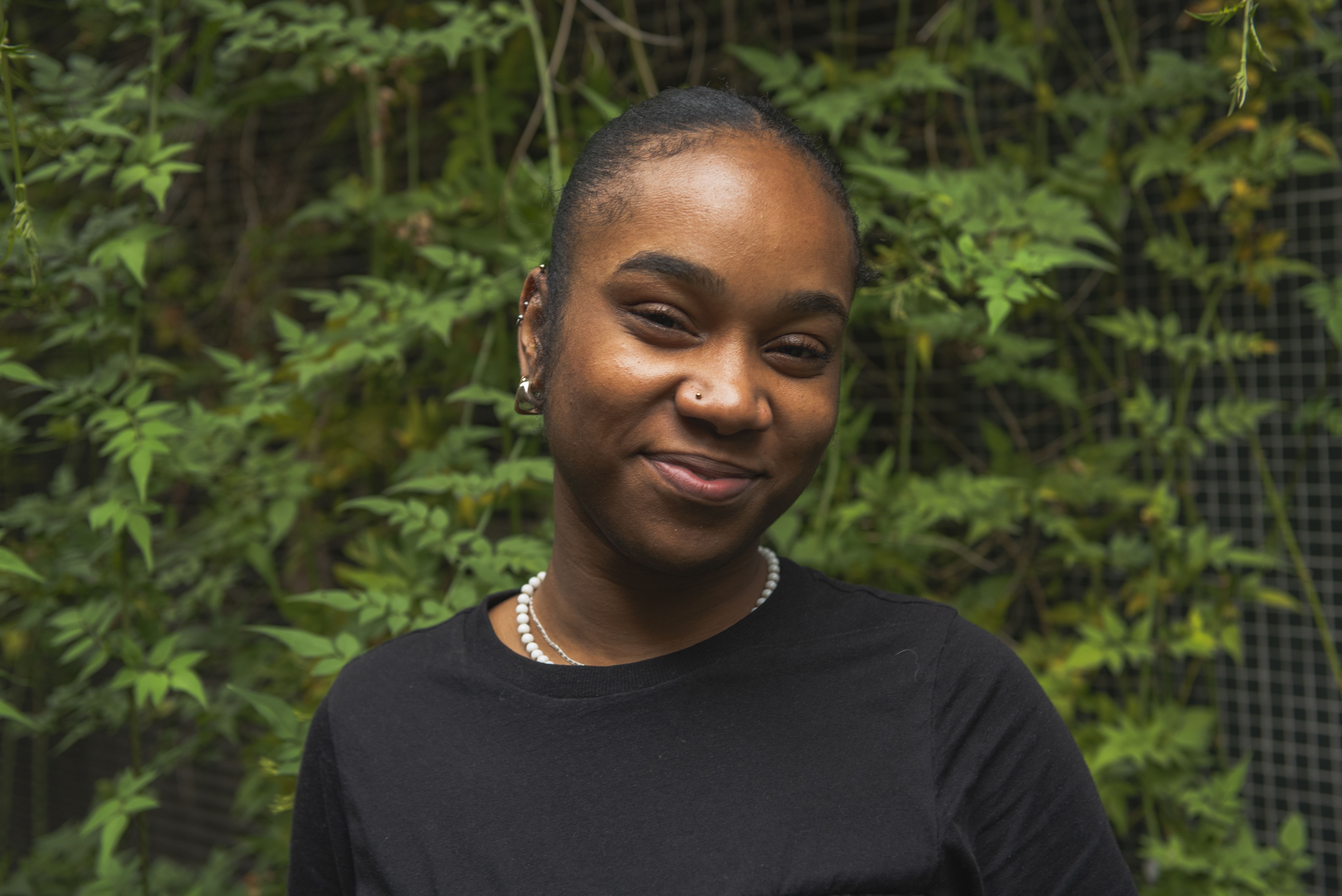Meet Asili Taylor: documenting being and connection in black gatherings and spaces

- Written byStudent Communications
- Published date 30 September 2024

Asili Taylor is one of three artists who worked with UAL's Brand and Creative team to create the collages for Black History Month this year.
We spoke to Asili to discover the artist behind the work.
Hi Asili! Can you introduce yourself?
Hi, I’m Asili and I graduated from CSM in fine art this year. I’d best describe my practice as being image-based work. I like to focus on experimenting with collage, video and print.
How did your journey with art begin?
I realised I wanted to make art at a very young age. I collaborated with people to make things, and I didn’t even really know it was art at the time. I grew up in Gambia, so the resources and the education were a bit different. However, we did a lot of ‘making’ with the resources we had -so that was a big part of what made me realise I wanted to create – specifically with others.
Why do you make art, and what do you feel is your mission as an artist?
The main purpose of my art is to bring people together. To ask questions about community and domesticity that interfere with segregated ideas of being.
What is your work about, and what messages do you convey through it?
My work is about investigating the topics mentioned above, and primarily deals with questions about the reproducibility and authenticity of photo-based media, focused on Black gathering. I’m interested in image-making processes and outcomes that hold open space for thinking from and into Black spaces.
Who are your primary inspirations?
I grew up with the fortune of having many mothers. All whom I think individually passed down ways of being that I hold onto very dearly. They are all very different and all have/had different ideas of how to be together. I’d say they are my primary inspirations because they’ve left me with many different modes of being that I have the luxury to digest creatively.
What piece of yours stands out the most to you? Why?
My piece “That Which Remains” stands out to me the most because it was one of the first pieces that solidified my research in modes of being and connection. The piece is 3 A4 prints exploring self-portraits through connection with others. It was a starting point from which I opened up deeper explorations into relation. The process was unpredictable and random. It was about mark-making revelation through a photographic print process and my relationship with this process expanded further into other modes of collage and photo work.
Congratulations on graduating this summer! What are you planning to do next?
I'm jumping straight back into academia, and I will be doing my master's degree in audio-visual performance practice at CSM.
Why does the world need creativity?
The world needs creativity because it is way too full of things undigested and unexplored.
You’ve been selected as part of the Black History Month campaign for UAL. The theme is ‘Reclaiming narratives’- What does the month and the chosen theme mean to you?
The theme ‘reclaiming narratives’ makes me think of how difficult it can be for Black people to be content with the/their archive. Collage is an interesting choice for this campaign for that reason.
The archive needs to be broken up and done again, added to and fabricated and given another look. To reclaim narratives, I think we must start imagining and making things up, it wouldn’t be far-fetched to consider these as compensation or even reparations.
I think a lot about reclaiming narratives of our homes and intimate spaces or Black domesticity. Reclaiming narratives are legacies made up of untold stories to create one’s own true story because the truth in the archive is insufficient.

More
See more of Asili's work:
Find out more about Black History Month at UAL